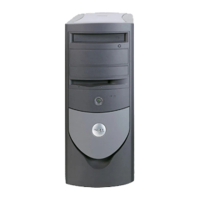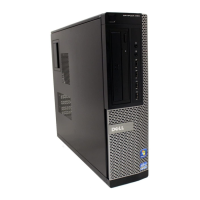System Overview 1-3
&KDVVLV6LPLODULW LHV
All four chassis configurations have the following similarities:
The same system board.
Identical operational characteristics (same BIOS, POST, memory,
microprocessor, external I/O ports, and so on).
Identical diagnostics, diagnostic beep codes, and diagnostic-screen error
messages (see Chapters 1 through 3 and Appendix A). However, the
OptiPlex NX1 computer has no built-in diskette drive and requires a special
setup process to run the diskette-based diagnostics as described in Chap-
ter 2.
6WDQGDUG)HDWXUHV
The features described in the following subsections are common to all chassis
configurations.
3 HQWLXP,,0LFURSURFHVVRU
All systems in the OptiPlex GX1 and OptiPlex NX1 computer families incorpo-
rate the Pentium II microprocessor for improved operating speeds and overall
performance. Some of the major enhancement features of the Pentium II
microprocessor include internal 16-KB data and instruction caches, internal
math coprocessor, and the MMX instruction set for high performance in com-
plex multimedia and communications environments. The Pentium II
microprocessor also uses a technique called single instruction, multiple data
(SIMD), which permits processing data elements in parallel for additional sys-
tem performance enhancement.
The microprocessor is physically located in a single-edge contact (SEC)
cartridge/heat sink assembly on the system board for ease of upgrading when
faster processors are available. Contact Dell Computer Corporation for informa-
tion about Dell-supported microprocessor upgrades.
6HFRQGDU\/&DFKH
For additional performance, the OptiPlex GX1 and OptiPlex NX1 systems
employ a secondary cache memory subsystem with a cache memory control-
ler and 512 KB of pipeline-burst SRAM cache memory. The L2 cache SRAM is
located in the SEC cartridge/heat sink assembly on the system board.
0DLQ0HPRU\
Main memory for the OptiPlex GX1 and OptiPlex NX1 systems ranges from a
minimum of 32 MB to a maximum of 384 MB. All main memory is
implemented using high-speed ECC and non-ECC DIMMs. One to three
DIMMs, ranging in memory capacity sizes from 32 to 128 MB, may be used to
provide a maximum memory capacity of 384 MB.

